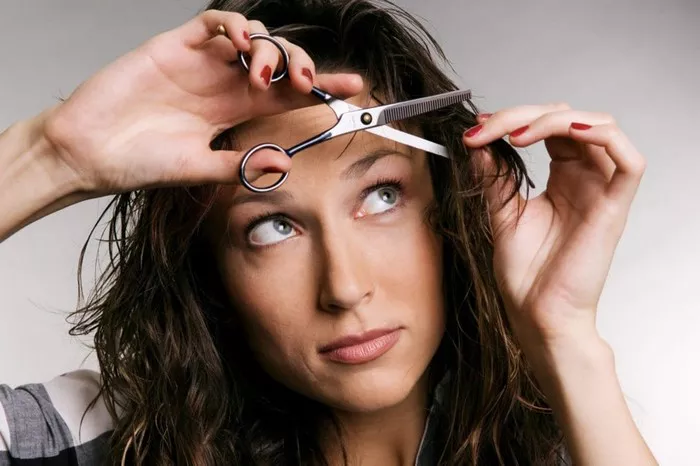Hair loss is a common concern that can affect individuals of all ages and genders. While most people associate hair loss with aging, it may surprise you to learn that hair thinning can begin much earlier in life. Understanding the age at which hair thinning starts and recognizing the early signs of hair loss is crucial for timely intervention and effective management. In this comprehensive guide, we will explore the factors influencing the onset of hair loss, the early indicators to watch for, and how to maintain healthy hair as we age.
The Science Behind Hair Loss
To comprehend when hair thinning may begin, we must delve into the biology of hair growth. The hair growth cycle consists of distinct phases, including growth (anagen), transition (catagen), and resting (telogen). Various factors, such as genetics, hormones, and lifestyle, influence this cycle and may initiate hair loss. By understanding the underlying mechanisms of hair loss, readers will gain insights into the potential age at which hair thinning might start.
The Age of Onset: When Hair Thinning Begins
Hair thinning can start as early as the late teens or early twenties, though it is more commonly associated with aging, typically around the late thirties or early forties. This age variance can be attributed to genetic predisposition, hormonal fluctuations, and individual differences. Factors like a family history of hair loss or certain medical conditions may accelerate the onset of hair thinning. By presenting this information, we provide readers with a clearer picture of when they may expect hair loss to begin.
Early Signs of Hair Loss
Recognizing the early signs of hair loss is crucial for timely intervention and effective management. One of the initial indicators is increased hair shedding. While it is normal to lose some hair daily, excessive shedding, often noticed while showering or brushing, could be a red flag. Another early sign is a widening part line, where the scalp becomes more visible due to thinning hair. A receding hairline is also a common early sign, particularly in men, where the hairline gradually moves backward from the forehead.
Thinning hair around the crown is another indicator of hair loss, leading to a noticeable reduction in hair volume in that area. Additionally, observing stray hairs on pillows or clothing might suggest telogen effluvium, a condition triggered by stress or hormonal changes.
Individuals experiencing these early signs should seek professional guidance from dermatologists or hair specialists. Timely intervention through medications, topical treatments, or lifestyle changes can often prevent further hair loss and support hair regrowth. By taking action at the first signs of hair loss, individuals can increase the likelihood of successful management and maintain healthy hair for a more extended period.
What to do if you experience hair loss symptoms?
If you experience hair loss symptoms, taking proactive steps can help address the issue and promote hair health. Here are some essential actions to consider:
1. Manage Stress:
Practice stress-reducing techniques like meditation, yoga, or deep breathing exercises to mitigate stress-related hair loss.
2. Use Gentle Hair Care Products:
Opt for mild shampoos and conditioners suitable for your hair type. Avoid products containing sulfates and parabens.
3. Consider Topical Treatments:
Over-the-counter or prescription topical treatments, like minoxidil, may aid in hair regrowth and slowing down hair loss.
4. Explore Medical Treatments:
In some cases, medical treatments like oral medications or hair transplant procedures may be suitable options. Consult with a healthcare professional to determine the best approach for your situation.
By taking these proactive measures, individuals can effectively manage hair loss symptoms and support healthier, more resilient hair. Early intervention is essential for better outcomes, so don’t hesitate to seek professional advice and embark on a hair care routine tailored to your specific needs.
Maintaining Healthy Hair as We Age
While hair loss is a natural part of aging for many, certain lifestyle habits can support healthy hair as we grow older. A balanced diet rich in essential nutrients, regular scalp massages to promote blood circulation, and avoiding harsh hair treatments are all beneficial practices. Additionally, seeking professional advice from dermatologists or hair specialists can help identify the underlying cause of hair loss and determine the most suitable treatment options.
Conclusion:
Hair thinning can start at various ages, influenced by genetics, hormones, and individual factors. Recognizing the early signs of hair loss is crucial for early intervention and effective management. By understanding the science behind hair loss and implementing healthy hair care practices, individuals can take control of their hair health and maintain luscious locks as they age. Seeking professional guidance and support is essential for a comprehensive approach to hair loss prevention and management. Armed with this knowledge, readers can embark on a journey towards maintaining vibrant, healthy hair throughout the different stages of life.


